Stony Brook Leads the Way in Green Energy Through Innovation and Action
The Campus is Researching—and Modeling—a Cleaner Future
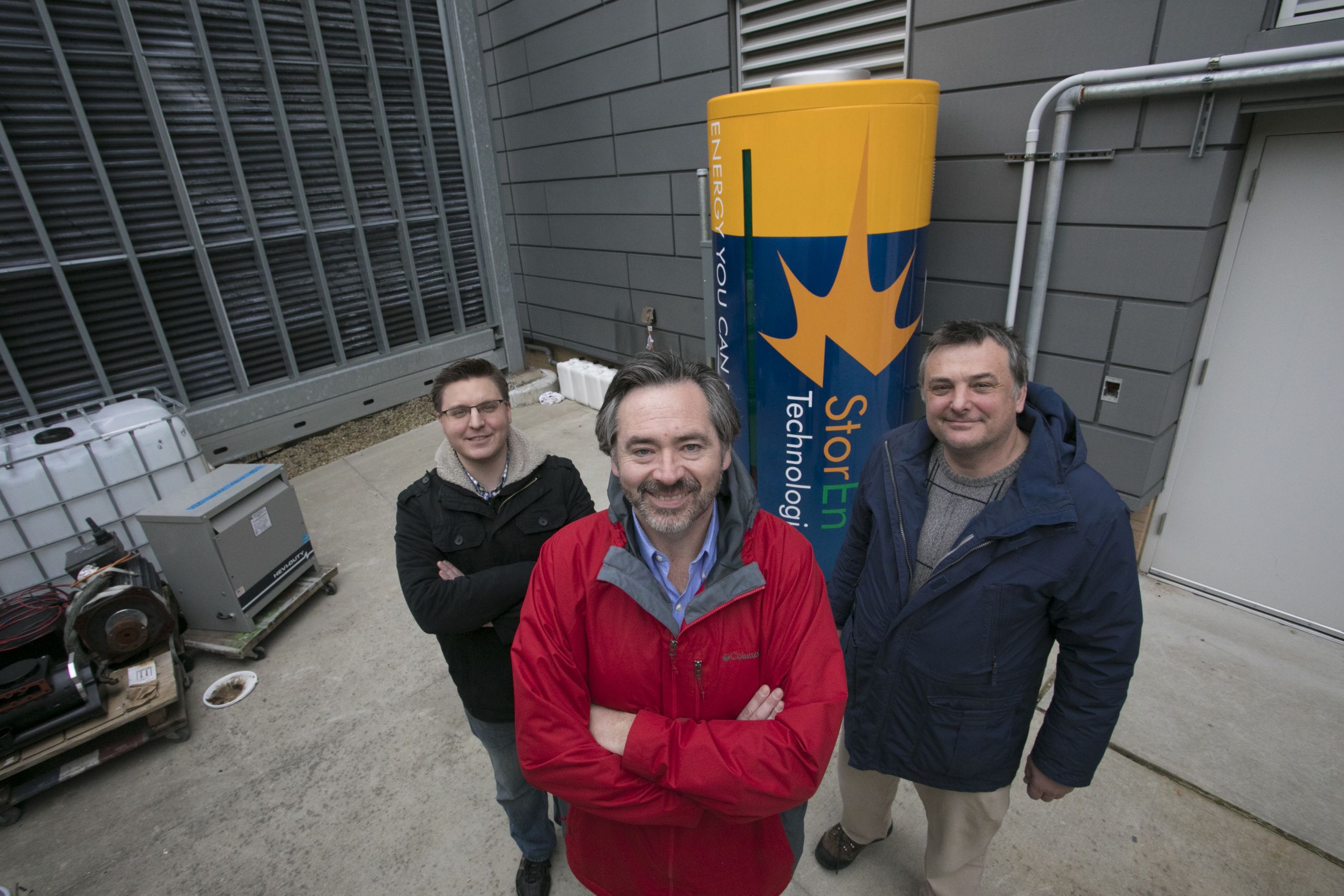
As cities, states and countries set ambitious goals to reduce their reliance on fossil fuels and to increase the use of renewable energy sources, Stony Brook University in New York is taking on a key leadership role. The University is making critical scientific advances that will make society’s goals a reality, while the wider campus serves as a model for change.
Professors are decarbonizing fuels, designing better batteries, improving combustion engines and more. In the process, they’re partnering with other research entities, corporations, advocacy organizations and global initiatives to expand their reach. On campus, buses are running on alternative fuels. Buildings have been retrofitted with energy-saving features. Students are advocating for a greener environment.
This unique coming together of scientific exploration, effective advocacy and cultural change at Stony Brook positions the University at the forefront of sustainability and innovation in clean energy.
“It falls to SBU, as a strong and influential thought leader, to show others in academia and industry how to make a significant impact with regard to clean energy technologies,” says David Hamilton, chief operating officer of Stony Brook’s Advanced Energy Research and Technology Center. “Others look to SBU to see what should be done, how it should be done and to what extent it should be done.”
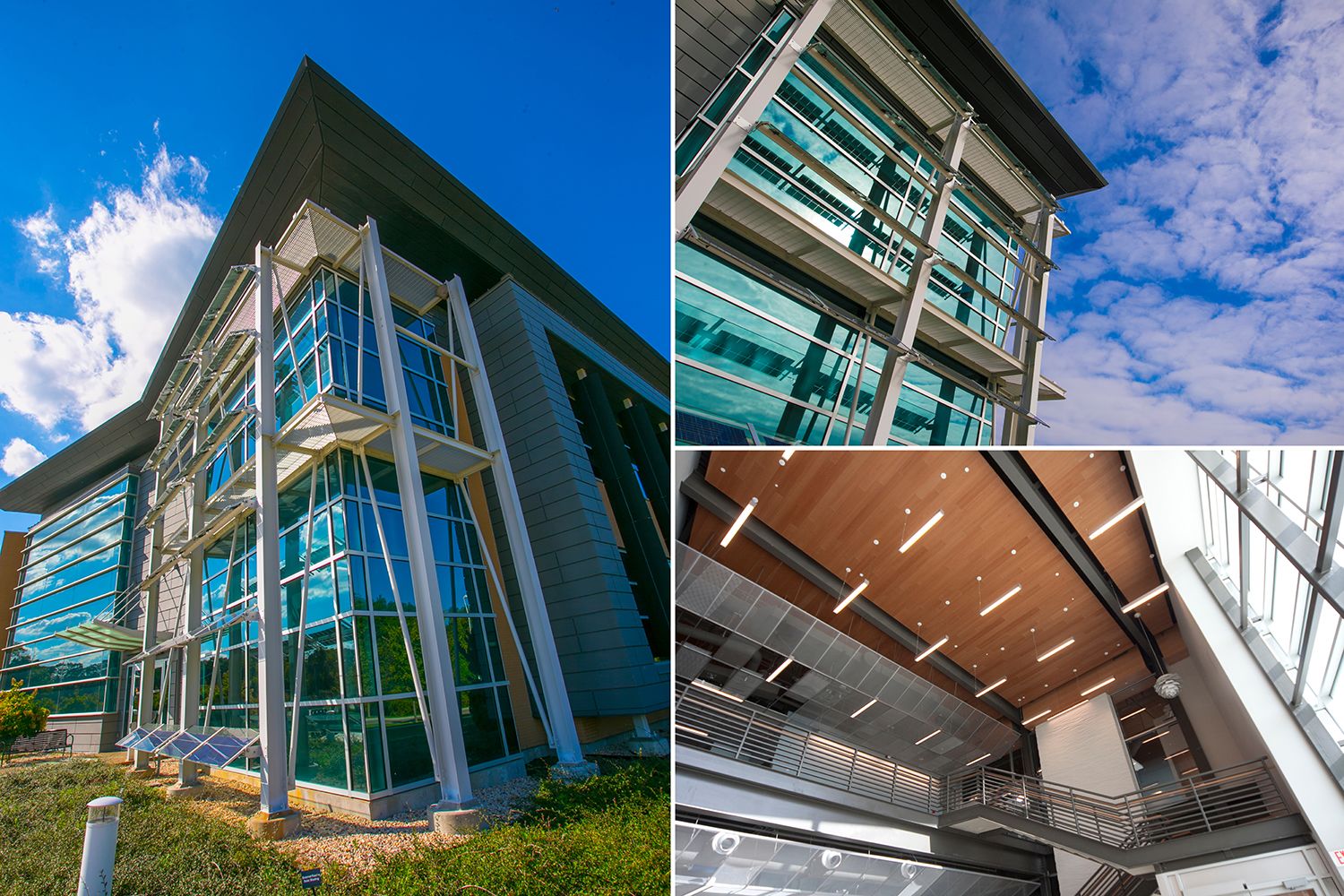
Researchers at the Advanced Energy Center are developing renewable ways to power our homes, our cars and our industries.
Researchers at the Advanced Energy Center are developing renewable ways to power our homes, our cars and our industries.
Advancing Innovative Energy Research
Much of Stony Brook’s innovative green energy research is taking place at the Advanced Energy Center, a $45 million state-of-the-art facility. Every other year, the center brings together experts from all over the world to share research, learn from cutting-edge industry leaders and collaborate with peers, driving and growing the advanced-energy ecosystem. The most recent conference, titled The Future of Energy Is Here and held in March 2018, drew more than 1,300 attendees, 225 speakers and 100 industry exhibitors.
The center is making a critical mark on advancing clean energy endeavors and was instrumental in creating Stony Brook’s new Institute of Gas Innovation and Technology (I-GIT). Founded in February 2018, the institute is a collaboration of the Advanced Energy Center and National Grid, a multinational utilities corporation. Based in the United Kingdom, National Grid supplies energy to the northeastern United States, including Long Island, where Stony Brook is located. The institute seeks to develop innovations in renewable energy that could be tested in New York State, starting with National Grid’s vast customer base. By 2050, New York State seeks to reduce greenhouse emissions by 80 percent below the levels released in 1990.
Replacing Natural Gas with Renewable Gas
One of I-GIT’s most promising projects is focused on replacing natural gas with renewable natural gas, which is produced by organic sources that can replenish themselves. In that project, researchers are developing two options: in the near term using digesters and in the long term using a power-to-gas-to-power process, which stores excess wind and solar power as hydrogen that could, in turn, be used to produce a new fuel, biomethane. The process could address energy needs on a global scale, says Devinder Mahajan, professor in Stony Brook’s Department of Materials Science and Chemical Engineering and director of I-GIT. Mahajan is separately studying the potential to use wood waste to produce electrical power.
Less than two years old, I-GIT has already been featured in American Gas Magazine, for industry professionals, received grants and attracted interest around the world, even teaming up with the Center for Sustainable Energy, a nonprofit based in San Diego, to educate people and policymakers on the advantages of clean energy. “We don’t only identify problems,” says Mahajan. “We seek solutions.”
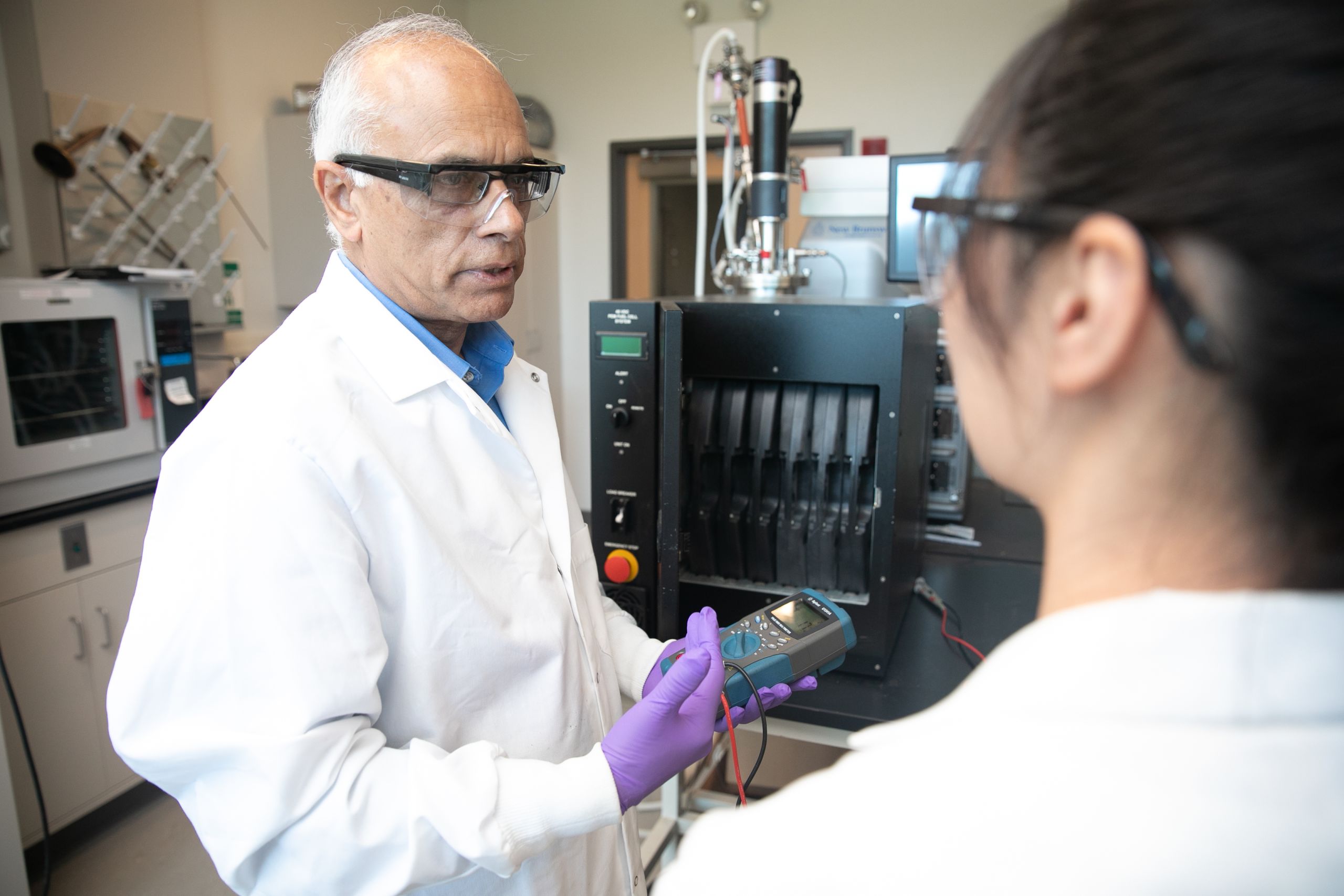
Devinder Mahajan, director of I-GIT, is researching the potential of wood waste to produce electrical power.
Devinder Mahajan, director of I-GIT, is researching the potential of wood waste to produce electrical power.
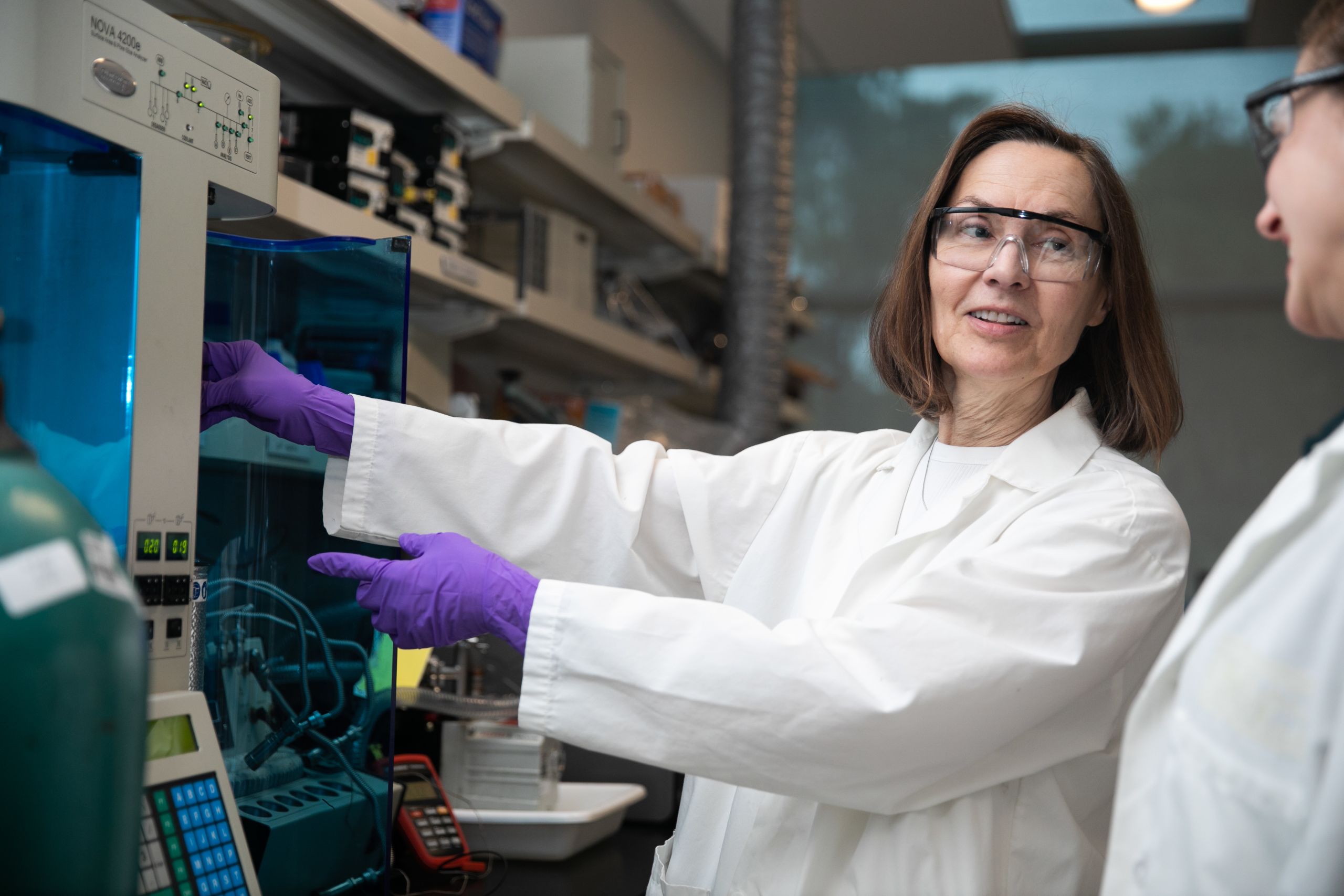
Stony Brook professor Esther Takeuchi, who has saved countless lives with her invention of a compact lithium battery for implantable cardiac defibrillators, is now working on large-scale batteries that could power wind farms.
Stony Brook professor Esther Takeuchi, who has saved countless lives with her invention of a compact lithium battery for implantable cardiac defibrillators, is now working on large-scale batteries that could power wind farms.
Achieving Battery Breakthroughs
When it comes to solutions, Esther Takeuchi’s research team is striving to develop the next generation of batteries on a large scale—ones that could power electric cars, wind farms and other emerging technologies in a more sustainable way.
Takeuchi, a SUNY Distinguished Professor in Stony Brook’s Department of Materials Science and Chemical Engineering, says current batteries take too much time to charge, don’t have a long enough life and cannot be effectively recycled. Already, her team has made a breakthrough discovery about how lithium moves inside the individual nanoparticles that make up lithium-ion batteries. The findings hold incredible promise for creating batteries that charge faster and last longer. “It’s science with a purpose,” says Takeuchi. “We have the opportunity to make a difference in people’s lives.” A world leader in energy technology, Takeuchi previously invented a compact lithium battery for implantable cardiac defibrillators, which has saved millions of lives. She has received numerous awards for this internationally recognized research. Most recently, she was awarded the 2018 European Inventor Award, making her the only American to bring home Europe’s most prestigious prize of innovation that year.
Like many Stony Brook professors, Takeuchi says the University’s connection to nearby Brookhaven National Laboratory (BNL), where she holds a joint appointment as chief scientist, has been critical. Stony Brook is part of the management team of BNL, a United States Department of Energy national laboratory located in Upton, NY. Takeuchi shares her time between labs there and on the University’s campus.
Takeuchi credits BNL’s highly sophisticated National Synchrotron Light Source II, which produces extraordinary light radiation, with helping her team advance its research. Researchers use it to conduct experiments in which they observe chemical behavior in battery prototypes. “It’s been quite transformative,” Takeuchi says. “We can see directly inside the batteries to follow the evolution of the materials as they are working. We can see not only the material in the beginning, but how, when and where it is changing."
Powering the Future of Transport
Researcher Sotirios Mamalis is focused on developing an alternative type of combustion technology for engines that could reduce greenhouse gases. Mamalis, an associate professor in Stony Brook’s Department of Mechanical Engineering, also is seeking to improve fuel efficiency in cars. He is attempting to develop a new biofuel to replace petroleum-based fuels, partnering with RTI International, a nonprofit research group in North Carolina, to explore its production potential.
At SBU, faculty and students alike are conducting advanced research and making discoveries. This past year, three Stony Brook undergraduates—James Haggerty, Brendan Zotto and Avi Cohen—converted a Suzuki motorcycle from gasoline to electric power for their senior project. They created a fully functional vehicle with a recharge time of two hours, a range of 70 miles and a cost of less than $5,000. “If we electrify the way we drive and produce our electricity using renewable energy, we can cut those emissions,” says Haggerty, who graduated in May and aspires to work in renewable energy and transportation technologies. “That has huge implications for my generation and generations to come.”

Stony Brook associate professor Sotirios Mamalis (third from the left) is developing an alternative type of combustion technology that could reduce greenhouse gases.
Stony Brook associate professor Sotirios Mamalis (third from the left) is developing an alternative type of combustion technology that could reduce greenhouse gases.
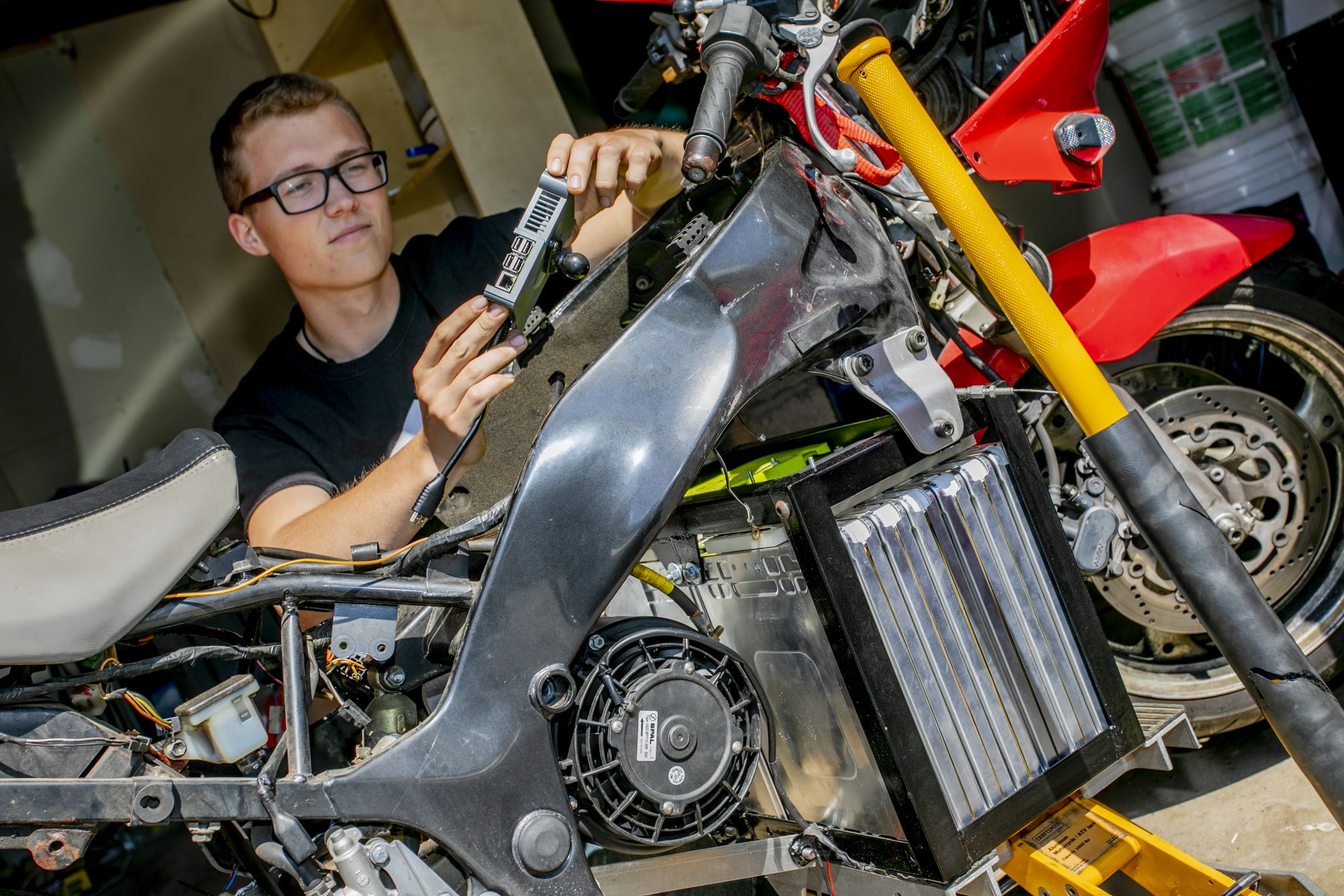
James Haggerty ’19, who helped convert a motorcycle from gasoline to electric power for his senior project, plans a career in renewable energy and new transportation technologies.
James Haggerty ’19, who helped convert a motorcycle from gasoline to electric power for his senior project, plans a career in renewable energy and new transportation technologies.
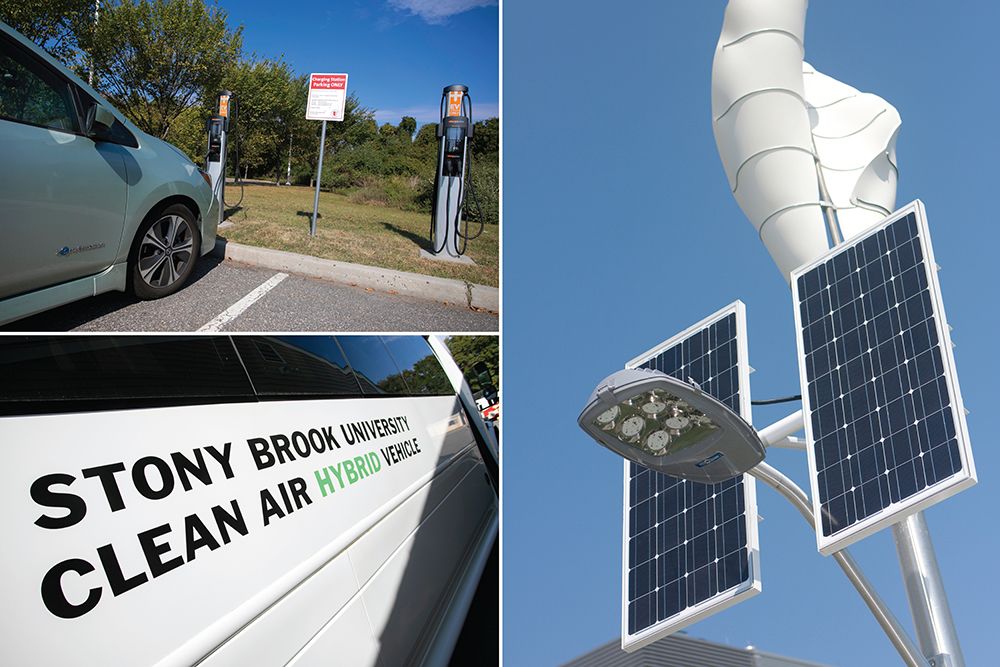
Stony Brook’s advocacy of renewable energy can be seen across campus in practical ways — from its use of electric cars and hybrid buses to solar-powered LED fixtures.
Stony Brook’s advocacy of renewable energy can be seen across campus in practical ways — from its use of electric cars and hybrid buses to solar-powered LED fixtures.
Greening the Campus Itself
Even students who are not directly involved with research are advocating for sustainable initiatives. A student-led Stony Brook chapter of the Climate Reality Project, a nonprofit group working to solve global climate change, is encouraging the campus to become 100 percent reliant on renewable fuels by 2030.
Throughout campus, SBU is increasingly shifting to renewable energy — from small-scale efforts, such as retrofitting lights in parking lots with energy-efficient LED fixtures that emit brighter light but use half the energy of the old ones, to efforts on a larger scale, such as installing solar panels while replacing older heating, ventilation and air-conditioning systems with more energy-efficient ones.
The University has also adopted a new system that allows the campus community to track energy use through real-time information fed from more than 120 energy meters within buildings. Energy consumption data provided by the system includes statistics on electricity, solar electricity, steam, chilled water, natural gas and recycling, as well as information on sustainability initiatives.
In so many ways, Stony Brook is driving sustainability in all fields, from adopting green energy solutions itself to accelerating scientific discovery and training tomorrow’s leaders to usher in the next generation of green solutions.
“It is imperative that we lead with research, but also that we lead by example,” Hamilton says. Stony Brook has the opportunity not only to help develop the energy technologies of the future, but also to make a transformative impact on the energy landscape of the region and the nation today by serving as a model of advanced technologies.



